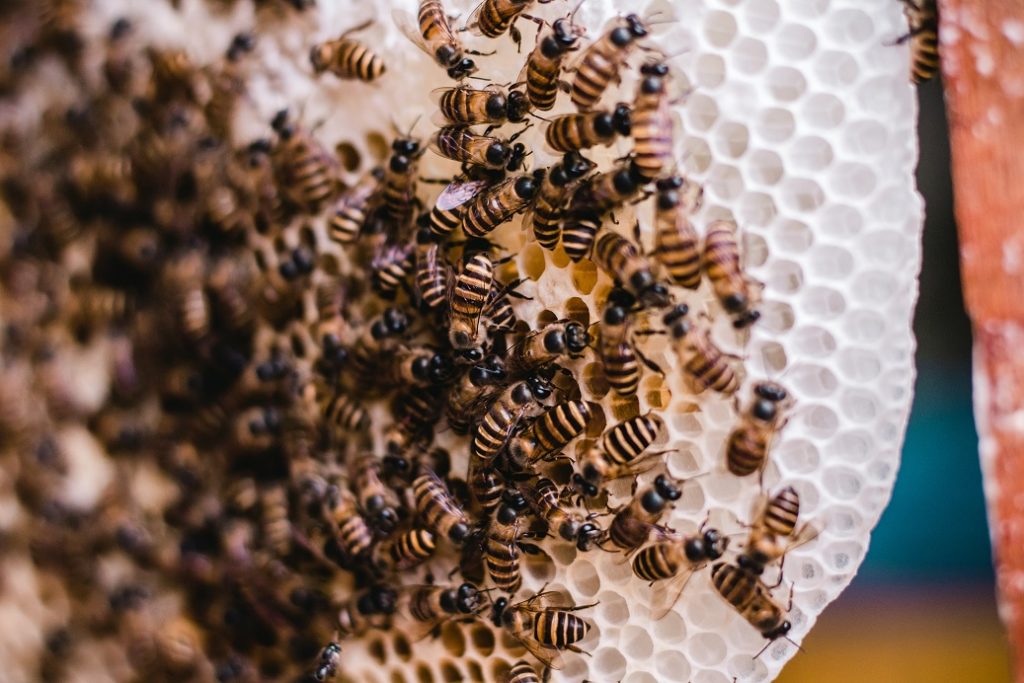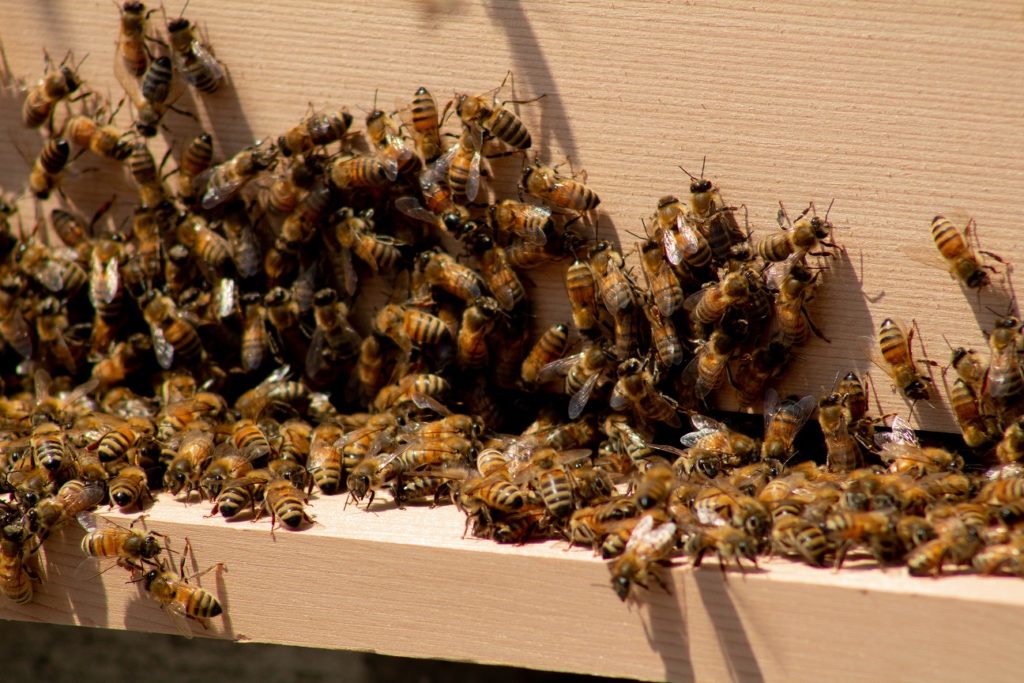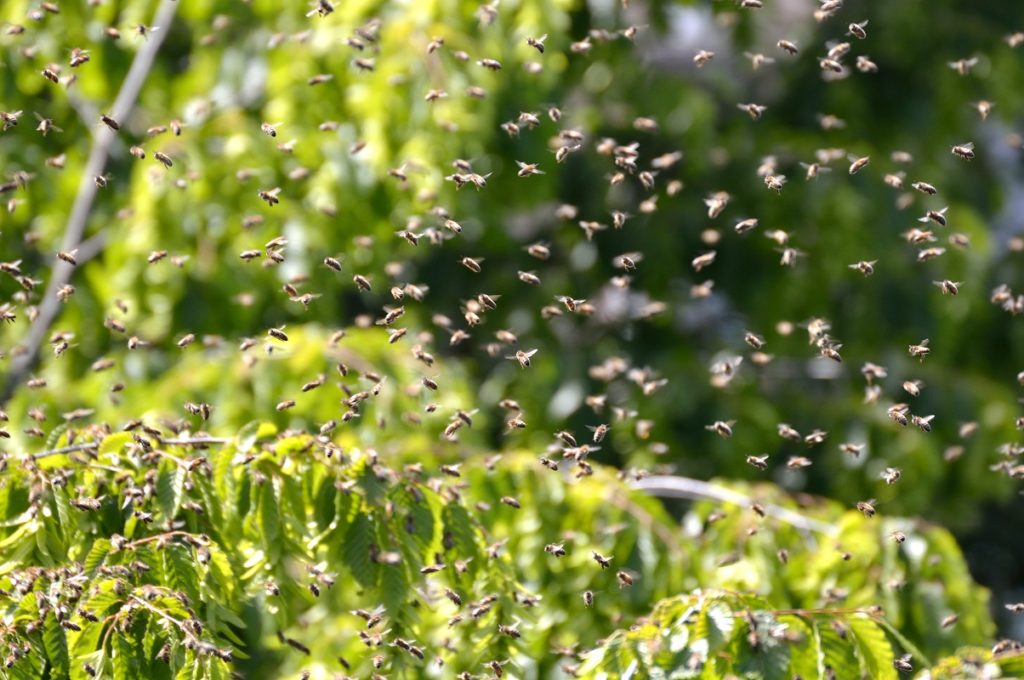An early solution is easier than a developed problem.
See our 321 + 5-star reviews on Yelp.
All our bee removal work is guaranteed and we are licensed & insured. Get a quote by calling or texting us.
An early solution is easier than a developed problem.
An early solution is easier then a developed problem.
See our 321 + 5-star reviews on Yelp.
All our bee removal work is guaranteed and we are licensed & insured. Get a quote by calling or texting us.
The solution to bee and wasp removal begins and ends with us.
We are a full service bee and wasp removal company for residential and commercial properties.
We operate in all of Orange County and are seasoned in all aspects of bee and wasp removal and bee keeping. We are always respectful of our clients properties and are of course, licensed and insured.
Management works collaboratively as a team to manage every aspect of each job, ensuring consistent execution, attention to detail, and happy clients.
Whether you need wasp or bee removal from a tree, under your home’s eaves, attic, roof, walls, vehicle, or alike we can remove the insects and resolve the problem once and for all.
How it works.
Say good by to the bees and wasps.
We thrive on customer satisfaction. We offer live removal as well as alternative solutions for all your unwanted bee needs. Most of our work comes with a 30 days guarantee and a 1 year warranty for removal and repairs. The OC Bee Guy has helped service thousands of homes in Southern California and we are ready to help you! 714-306-9190
Our process is simple. All you have to do is call or text for a quote, and get scheduled.
It is interesting to know that we do no advertising, rather we rely on repeat business, referrals, and our stellar reputation. We carefully manage each job with clear communication, safety, and value, leaving clients happy and satisfied.
Additionally, in all we do we are committed to safety.


Types of pests we remove include:
-Bees
-Carpenter bees
-Bumble bees
-Yellow jackets
-Paper wasp
-Mud dauber
Type of structural/non-structural we service include the following:
-Residential
-HOA
-Condo/Townhouses
-Manufactured homes
-Commercial
-City facilities
-Utility
-Boats & Vehicles
-Business/Shopping Centers
-Sheds
About us
No one likes bees and wasps...except us.
Things go better with the right bees and wasp removal company.
We don’t indulge in shortcuts or excuses. Innovation’s great, but we’re old-fashioned about values such as work ethic, putting clients first, and always doing the job right. We believe it’s our history of good service that’s the secret to our good name.
Your deadlines will always be met and there will be no surprises on the invoice. We always work with a guarantee of satisfaction. This is how we built our reputation.

Frequently Asked Questions
If a cluster of bees suddenly appears on a wall, on a branch of a tree or on the ground and remains exposed please wait 24-72 hours. Swarms will often move on in a few days without intervention and although not defensive, they can sting if disturbed. Swarming is a fundamental and beautiful part of the bee’s life cycle. During the year the queen bee lays lots of eggs, the worker bees are born and form the colony. A colony can grow massively, both in terms of number of worker bees and needed space. The available space becomes smaller and smaller. When bees swarm, it means that one colony just became two colonies.
Scout bees (typically 1-5 dozen) are worker bees whose primary task is to find and locate a new place for the colony to build a hive. Generally, the cracks in stucco, openings in wood siding, chimneys, eaves, block wall, and flashing around chimneys, will provide access for bees. Once a location is found, they return to the swarm and lead them to the new location. Within an hour after arriving, the swarm will be inside the new location.
If you see single bees going in and out a hole in a structure in a single line you might already have a swarm that has moved in. It is a best at this point to call a bee specialist.
Sometimes scout bees accidentally wind up inside peoples’ homes. They usually come through the fireplace, vents, ceiling fans, tv mounted fireplace mantle or canned lighting. Bees always fly straight for the light source in the rooms, which is generally the window or skylight. Scout bees typically do NOT want to attack anyone inside the house and will go to the window like a magnet until they die.
It can be alarming to notice a few bees or a swarm of bees around your pond/pool and you may wonder what’s attracting bees. Bees need water to survive, and your pond may be just the source of water that they need. They consume the water and also take it back to their hive to help cool it.
Bees and the life of their hives depend on the worker bees heading out to forage for enough nectar and pollen to sustain the colony. These female worker bees fly from the hive, often up to miles away to forage for food until they die at around six weeks old. Suggest waiting 1-2 weeks until nectar flow has dried up.
It is important to remove the honeycomb of existing or late hives. Existing honeycomb can contain pollen or traces of honey that can lure a near by swarm to recolonize an old hive.
Africanized Bees are also known as Africanized Honey Bees as they are a honey producing bee. Africanized Bees are also known as ‘Killer Bees‘ and are hybrids of the African Honey Bee and various European Honey Bees. Africanized bees are characterized by greater defensiveness in established hives than European honey bees. They are more likely to attack a perceived threat and, when they do so, attack relentlessly in larger numbers. The first Africanized bees in the United States were discovered in 1985 in California. Africanized honey bees are dangerous stinging insects that have been known to chase people for more than a quarter of a mile once they get excited and aggressive. This is why they earned the nickname “killer bee.”
Learn more about African bees here: African bees
When bees or wasps sting a person, they inject venom through their stinger into the skin of the victim. Wasps, yellow jackets, and hornets have stingers without barbs that are usually retracted upon stinging, and these insects can sting people multiple times. The honey bee has a barbed stinger that remains in the victim’s skin with its venom sack attached. Someone can have an allergic reaction even they don’t have immediate symptoms. First get to a safe location either inside your car or home then look for the stinger proceed to pull your skin tight and remove the stinger.
For more information: https://www.aad.org/public/everyday-care/injured-skin/bites/treat-bee-sting

Get In Touch for a Quote
When you want to get a quote or simply ask a question, reach out to us via phone, text, or our Contact page.
- Aliso Viejo
- Anaheim
- Anaheim Hills
- Brea
- Buena Park
- Costa Mesa
- Cypress
- Diamond Bar
- Dana Point
- Fountain Valley
- Fullerton
- Garden Grove
- Huntington Beach
- Irvine
- La Habra
- Lakewood
- La Palma
- Laguna Beach
- Laguna Hills
- Laguna Niguel
- Laguna Woods
- Lake Forest
- Los Alamitos
- Mission Viejo
- Newport Beach
- Orange
- Placentia
- Rancho Santa Margarita
- San Clemente
- San Juan Capistrano
- Santa Ana
- Seal Beach
- Stanton
- Tustin
- Villa Park
- Walnut
- Westminster
- Yorba Linda